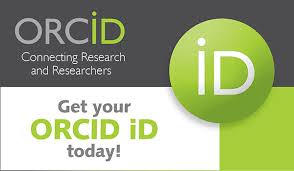Computación en la nube y transformación digital empresarial
Resumen
La computación en la nube se ha posicionado como un eje fundamental de la transformación digital empresarial, al permitir que las organizaciones accedan a recursos tecnológicos flexibles, escalables y de bajo costo. A través de modelos de servicio como Infrastructure as a Service (IaaS), Platform as a Service (PaaS) y Software as a Service (SaaS), las empresas han logrado modernizar sus procesos, optimizar la gestión de información y habilitar la innovación. El presente artículo analiza, desde una revisión bibliográfica, el impacto de la nube en la competitividad empresarial, los beneficios estratégicos que aporta, los retos de adopción y las implicaciones organizacionales. Los resultados indican que la nube no es únicamente una herramienta técnica, sino un catalizador de cambio cultural y estructural, indispensable para las empresas que buscan mantenerse competitivas en la economía digital.
Palabras clave
Referencias
Armbrust, M., Fox, A., Griffith, R., Joseph, A. D., Katz, R., Konwinski, A., … Zaharia, M. (2010). A view of cloud computing. Communications of the ACM, 53(4), 50–58. https://doi.org/10.1145/1721654.1721672
Buyya, R., Vecchiola, C., & Selvi, S. T. (2013). Mastering Cloud Computing: Foundations and Applications Programming. Elsevier.
Erl, T., Puttini, R., & Mahmood, Z. (2013). Cloud Computing: Concepts, Technology & Architecture. Prentice Hall.
European Parliament & Council. (2016). Regulation (EU) 2016/679 (General Data Protection Regulation—GDPR). Official Journal of the European Union, L119, 1–88.
Evans, P. C., & Gawer, A. (2016). The Rise of the Platform Enterprise: A Global Survey. The Center for Global Enterprise.
Fernandes, D. A. B., Soares, L. F. B., Gomes, J. V., Freire, M. M., & Inácio, P. R. M. (2014). Security issues in cloud environments: A survey. International Journal of Information Security, 13(2), 113–170. https://doi.org/10.1007/s10207-013-0208-7
Gartner. (2022). Forecast: Public Cloud Services, Worldwide, 2020–2026. Gartner Research (ID G00754528).
Hashem, I. A. T., Yaqoob, I., Anuar, N. B., Mokhtar, S., Gani, A., & Khan, S. U. (2015). The rise of “big data” on cloud computing: Review and open research issues. Information Systems, 47, 98–115. https://doi.org/10.1016/j.is.2014.07.006
Hsu, P.-F., Ray, S., & Li-Hsieh, Y.-Y. (2014). Examining cloud computing adoption intention, pricing mechanism, and deployment model. MIS Quarterly, 38(3), 851–876. https://doi.org/10.25300/MISQ/2014/38.3.07
IDC. (2023). IDC FutureScape: Worldwide Cloud 2023 Predictions. IDC.
ISO/IEC. (2014). ISO/IEC 17788:2014 — Information technology — Cloud computing — Overview and vocabulary. International Organization for Standardization.
(Nota: revisado y armonizado posteriormente como ISO/IEC 22123-1)
ISO/IEC. (2015). ISO/IEC 27017:2015 — Code of practice for information security controls for cloud services. International Organization for Standardization.
ISO/IEC. (2019). ISO/IEC 27018:2019 — Protection of PII in public clouds acting as PII processors. International Organization for Standardization.
Kavis, M. J. (2014). Architecting the Cloud: Design Decisions for Cloud Computing Service Models (SaaS, PaaS, and IaaS). Wiley.
Linthicum, D. S. (2014). Cloud Computing and SOA Convergence in Your Enterprise: A Step-by-Step Guide. Addison-Wesley.
Low, C., Chen, Y., & Wu, M. (2011). Understanding the determinants of cloud computing adoption in SMEs. Industrial Management & Data Systems, 111(7), 1006–1023. https://doi.org/10.1108/02635571111161262
Marston, S., Li, Z., Bandyopadhyay, S., Zhang, J., & Ghalsasi, A. (2011). Cloud computing—The business perspective. Decision Support Systems, 51(1), 176–189. https://doi.org/10.1016/j.dss.2010.12.006
McKinsey & Company. (2021). Cloud’s trillion-dollar prize. McKinsey Global Institute.
Mell, P., & Grance, T. (2011). The NIST Definition of Cloud Computing (Special Publication 800-145). National Institute of Standards and Technology. https://doi.org/10.6028/NIST.SP.800-145
NIST. (2012). SP 800-146: Cloud Computing Synopsis and Recommendations. National Institute of Standards and Technology. https://doi.org/10.6028/NIST.SP.800-146
NIST. (2011). SP 500-292: NIST Cloud Computing Reference Architecture. National Institute of Standards and Technology.
Oliveira, T., Thomas, M., & Espadanal, M. (2014). Assessing determinants of cloud computing adoption: An analysis of the manufacturing and services sectors. Information & Management, 51(5), 497–510. https://doi.org/10.1016/j.im.2014.03.006
OECD. (2021). The Digital Transformation of SMEs. OECD Publishing. https://doi.org/10.1787/bdb9256a-en
Westerman, G., Bonnet, D., & McAfee, A. (2014). Leading Digital: Turning Technology into Business Transformation. Harvard Business Review Press.
Williams, P., Hardy, C. A., & Nambiar, R. (2019). Emerging technologies and the digital transformation of business: A cloud-first perspective. IBM Journal of Research and Development, 63(4/5), 1–14. https://doi.org/10.1147/JRD.2019.2934057.
DOI: https://doi.org/10.23857/pc.v10i9.10454
Enlaces de Referencia
- Por el momento, no existen enlaces de referencia
Polo del Conocimiento
Revista Científico-Académica Multidisciplinaria
ISSN: 2550-682X
Casa Editora del Polo
Manta - Ecuador
Dirección: Ciudadela El Palmar, II Etapa, Manta - Manabí - Ecuador.
Código Postal: 130801
Teléfonos: 056051775/0991871420
Email: polodelconocimientorevista@gmail.com / director@polodelconocimiento.com
URL: https://www.polodelconocimiento.com/













